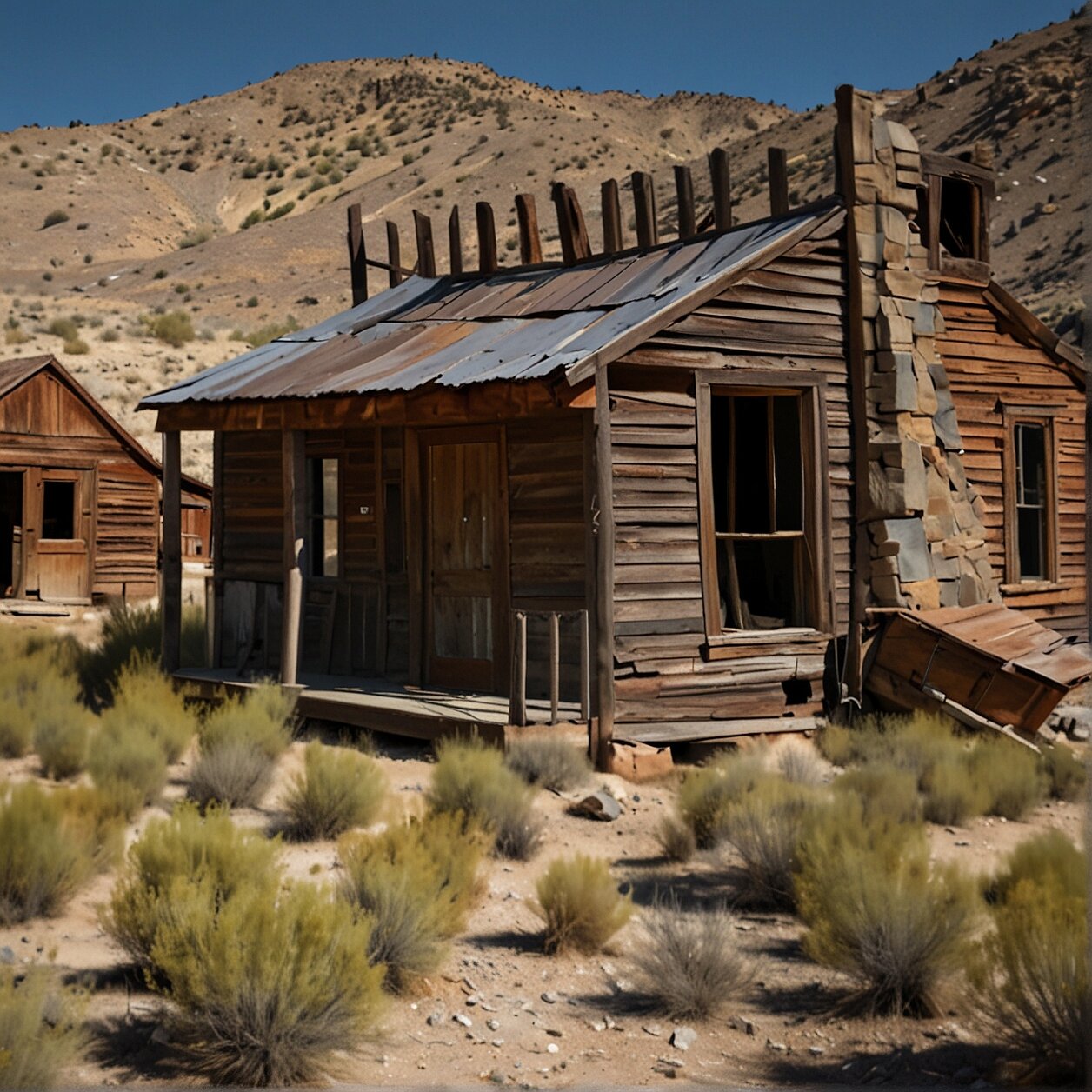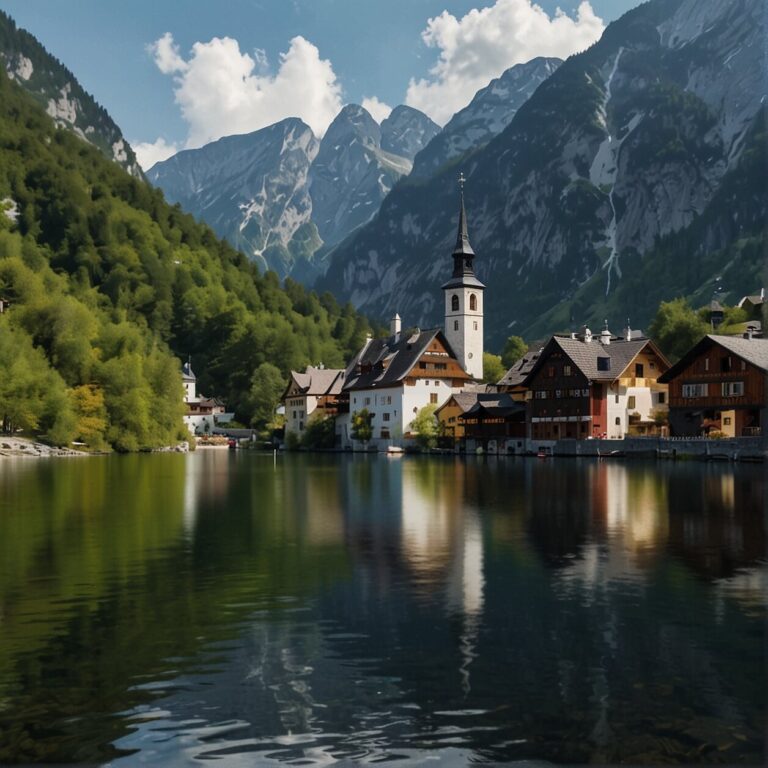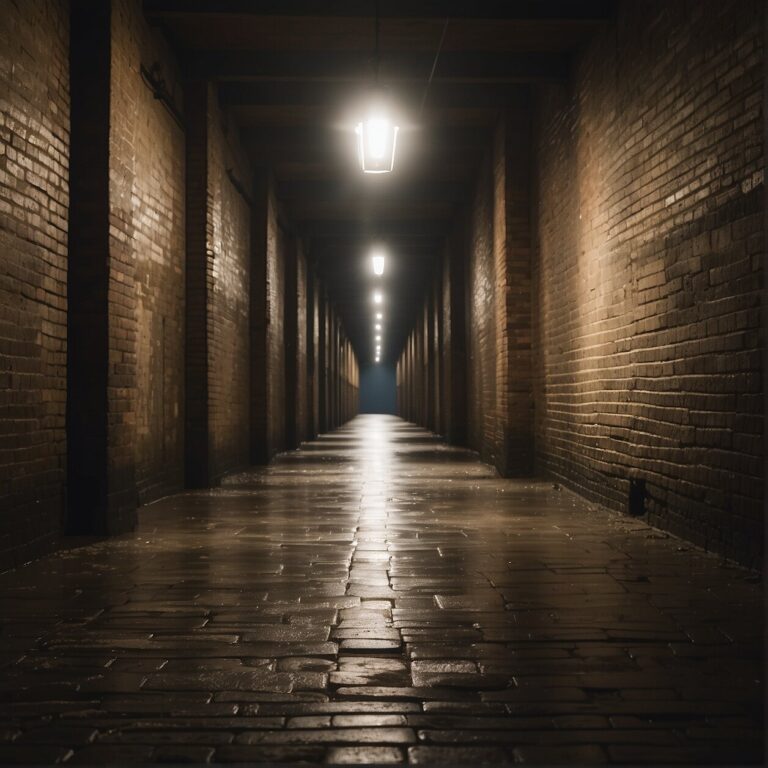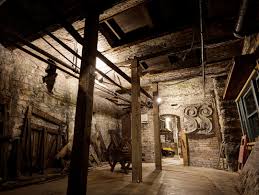Discovering the Ghost Towns of Nevada
Picture this: You’re cruising down an open, seemingly endless road in Nevada, surrounded by vast stretches of desert and mountainous landscapes. Suddenly, you spy something on the horizon that captures your interest – a town that appears abandoned, isolated, and intriguingly enigmatic. No, it’s not a mirage. This is one of many ghost towns in Nevada, each with its unique stories to tell, whispering of life and death, fortune and failure, dreams and despair. Tackling the enigma of Nevada’s ghost towns should be high on your list if you like a dash of history, adventure, and mystery in your travels.
“Nevada’s ghost towns are windows into the past, offering us invaluable insights into the intense struggle and delight of life in the Old West. They’re like museums under the open sky, filled with artifacts awaiting rediscovery.” – A seasoned Nevada explorer
So, whether you’re a passionate history buff, an adventurous spirit, or a curious weekend warrior, this article will be your offbeat travel guide through the history and current status of Nevada’s ghost towns. Get ready to unlock the mysteries and tales hiding behind the silent walls of these desolate locales, distant echoes of a once bustling life.
Unearthing the Past: A Brief History of Nevada’s Ghost Towns
As you might expect, Nevada’s ghost towns are shrouded in a veil of mystery, history, and intriguing tales, which all contributue to their current deserted status. The mid-19th century saw a period of feverish silver mining in Nevada, a phenomenon that gave birth to these towns. Communities sprang up around mines, bringing with them a unique culture, economy, and distinct way of life.
As is characteristic of many resource-intensive booms, however, the initial prosperity was short-lived. Once the silver veins began to deplete, people migrated, searching for new opportunities and leaving behind the towns they once called home, transforming them into the historic remnants we today know as ghost towns.
But every cloud has a silver lining, as they say. This mass exodus from these once-thriving settlements provided modern adventurers with a unique chance to explore these deserted lands. These ghost towns serve as a tangible, though eerie, reminder of the Silver State’s vibrant mining history and the impermanence of human endeavors. They provide an immersive experience that transports you back into a bygone era that was dominated by the lure of precious metals, boomtown dreams, and the intricate web of human life that accompanied them.
From stagecoach stations and old saloons to dilapidated houses and cemeteries, Nevada’s ghost towns hold countless stories and stepped-in-time experiences. Each visit is a peek into a world that was, a chance to touch, see, and feel the echoes of history that reverberate through the decaying structures and dusty streets.
Bringing a sense of adventure and a keen eye for detail, you, as an eager explorer, can experience the thrill of discovery and the eeriness of the past in a way that’s rarely possible in our fast-paced modern world.
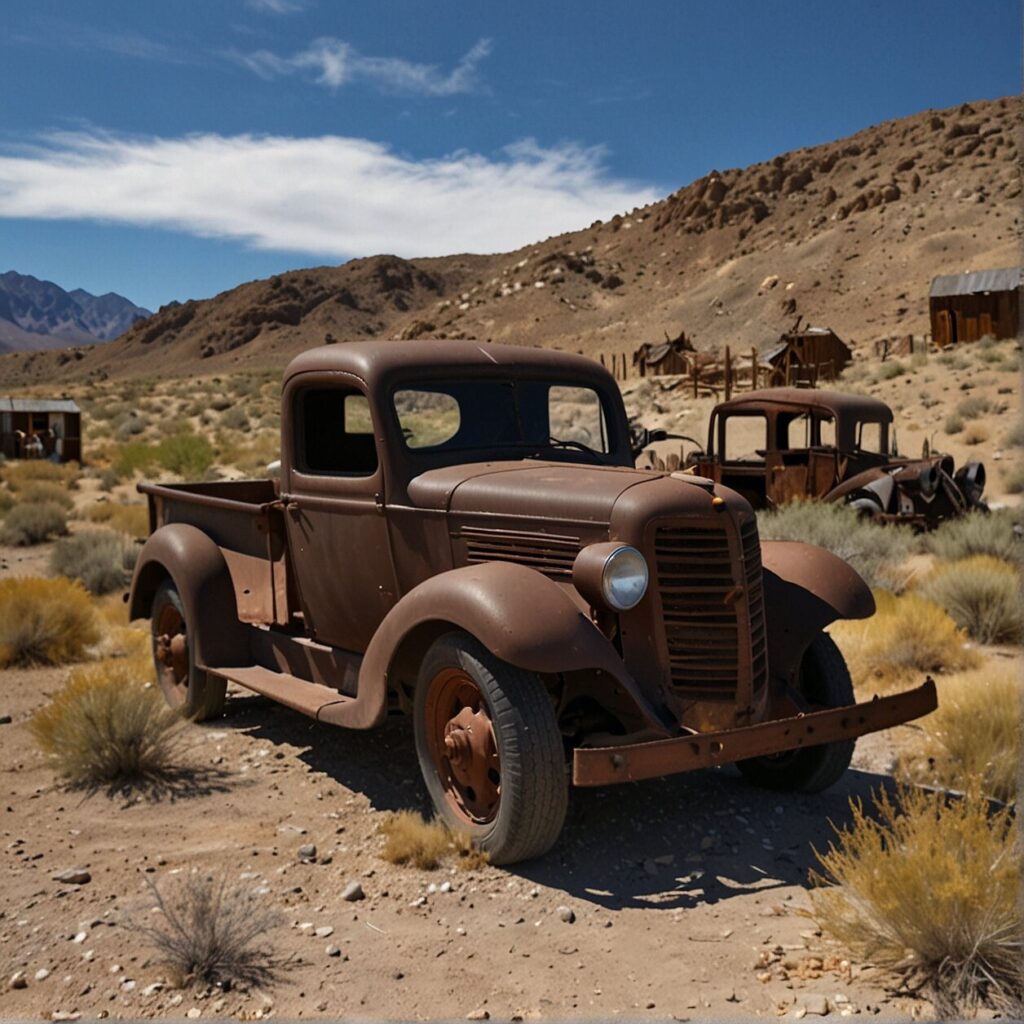
Exploring the Shadows of Time: Nevada’s Best Ghost Towns
Stepping into Nevada’s ghost towns is like stepping back in time, offering you a unique window into the Silver State’s once prosperous mining era. Embarking on this mystical journey, you’ll find yourself surrounded by remnants of an era long past, scaling through elements of history nestled in time.
Rhyolite, located near the eastern edge of Death Valley, is a quintessential example. The traveler is greeted here by the shell of the former bank building – a stark, standing testament to the town’s once vibrant economy. Grooves etched into the floor speak volumes about a people desperately coaxing prosperity from the earth.
Belmont, nestled amidst the Toquima Mountains, is another jewel. As you stroll along the gravel-laden streets of Belmont, you’ll stumble upon the picturesque ruins of a bygone era, including the reverberating Court House. These structures portray a captivating picture of life in the 19th century, whisking you back to the days when dreams of wealth, progress, and better life reverberated through the hills.
Then there’s St. Thomas, a dive into the surreal. Once submerged under the waters of Lake Mead, St. Thomas has re-emerged with time, presenting a surreal panorama of life, loss, and rebirth. The semi-submerged ruins here invite the adventurer in you to explore an underwater community now danced upon by the desert winds.
To conclude, the ghost towns of Nevada are more than just ruins of another day. They are historic murals, telling stories of the pioneers who dared to dream. Thus, while these towns maybe shadows of their former selves, their spirit continue to echo through the corridors of time, inviting brave travelers like you to discover, explore and reflect.
Frontier Echoes: The Impact of Mining on Nevada’s Ghost Towns
Nevada’s discovery of the Comstock Lode in 1859 sparked a mining boom that eventually led to the rise of numerous bustling towns. These towns became key economic centers, brimming with miners and prospectors seeking their fortune. The surge was so profound that it led Nevada to statehood.
However, as is characteristic of such boom-bust economies, many of these towns rapidly declined once the seams of silver and gold were depleted. Without the prosperity brought by the mining industry, businesses shuttered, families moved away, and what were once thriving communities slowly turned into ghost towns.
The landscape of Nevada is now scattered with these abandoned remnants of a bygone era. Many of the structures still stand as silent witnesses to the vicissitudes of fortune, their dilapidated buildings and mute streets echoing tales from the past. You can still see old saloons, brothels, churches, and banks, preserved in varying states, offering a glimpse into what life was like during Nevada’s mining glory days.
Also worth noting is the environmental impact. The legacy of mining in Nevada’s ghost towns is not just architectural but also geological. You will discover old mine shafts, slag heaps, and other mining detritus, a testament to the extent of the extraction that took place. The aftermath has left lasting scars on the landscape, some of which are still evident today.
However, despite the melancholic remains, these ghost towns have a bizarre charm that draws visitors from around the world. They represent an important chapter in Nevada’s history, allowing us a fascinating, tangible insight into the state’s mining past. Visiting these ghost towns is akin to stepping into a time machine, where you can grasp the rise and fall of the Silver State’s unique mining era.
So, as you prepare your journey to these captivating remnants of the past, keep in mind the story they tell about the triumphs and calamities of Nevada’s mining history. Not only will you uncover the memories etched into the walls of these ghost towns but you’ll also gain an understanding of the profound impact mining had on shaping Nevada’s past, present, and future.
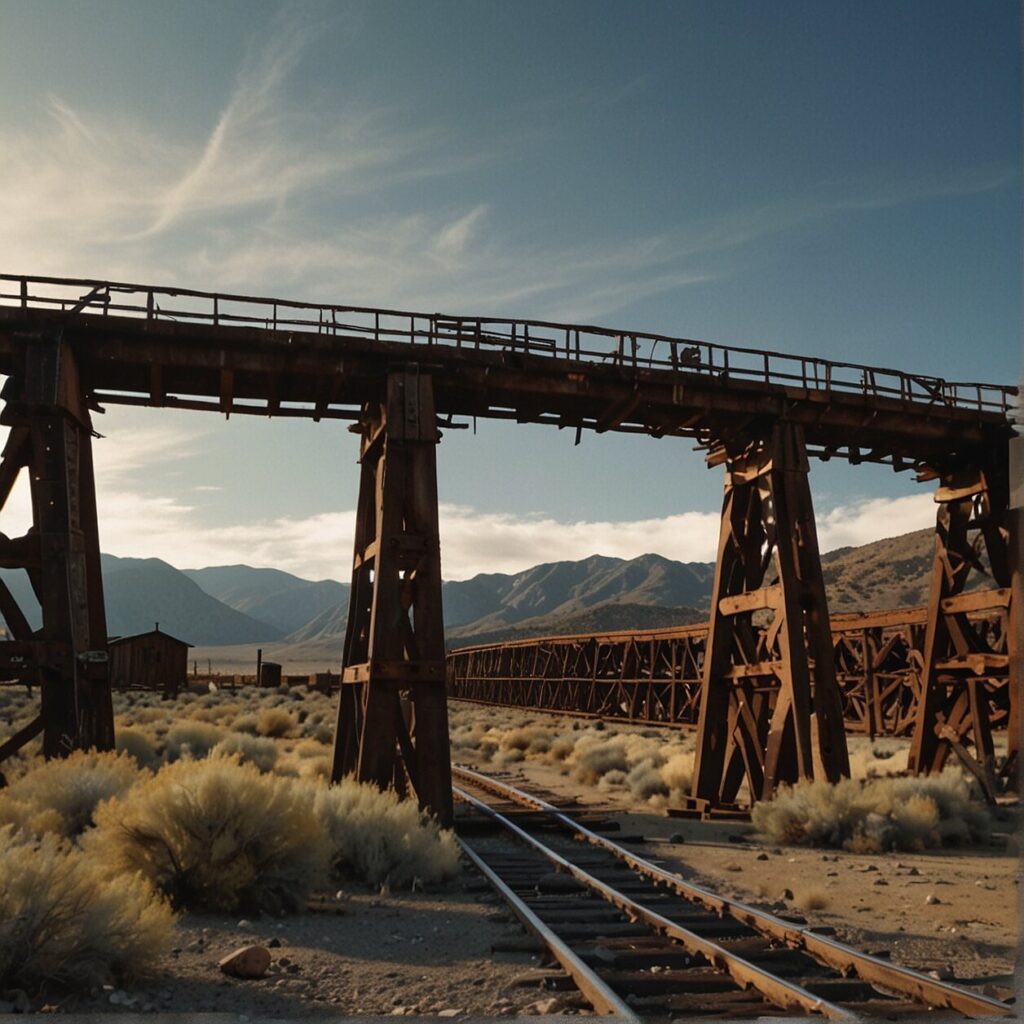
A Journey through Time: How to Prepare for Your Ghost Town Adventure
Embarking on your ghost town adventure in Nevada is not solely about showing up on the day. Adequate preparation will go a long way to enhance your expedition. Here are a few steps you can take to ensure you’re adequately geared for this thrilling journey.
First and foremost, understand the lay of the land. Do a bit of research to understand where these towns are located and the easiest way to access them. Nevada’s ghost towns are spread out across the state, with some posing tricky terrain. Understanding these details beforehand helps you to plan your journey efficiently, saving you time and energy on the day.
Also, consider the climate. Nevada can get quite warm during the summer, and some of these towns are in desert areas. Be sure to pack enough water, snacks, and wear appropriate clothing to protect yourself from the heat. Consider visiting in the spring or fall when the temperature is milder.
Familiarize yourself with the stories behind these towns. Knowing the history of the places you will visit makes the journey that much more enriching. It’s like carrying a secret map in your pocket; every building has a story, every open space is a time portal back to the gold and silver rush.
Lastly, ensure your camera is charged and ready to go. These ghost towns offer a unique aesthetic that’s a delight for photographers. From dilapidated structures to the arid landscape, you’ll want to capture these visual spectacles for posterity.
Getting ready for a journey to Nevada’s ghost towns is all about blending preparation and improvisation. Once you’ve gotten these steps right, you’re set to delve into Nevada’s magnificent past.
Ghost Town Checklist: What You Need to Know Before You Go
Exploring Nevada’s ghost towns is undeniably a unique excursion, one that could transport you right into the gritty remnants of the Wild West. Preparing for these trips, however, requires some proactive planning. Are you ready to charter the sands of time? Here’s your essential checklist.
Take Enough Water and Food
Many of these ghost towns, remnants of an era long gone, are located in remote deserts that can be harsh and unforgiving. Carrying enough water should be your topmost priority. Food, especially non-perishable snacks, is equally important. This isn’t the time or place for delicate cuisine, but the satisfaction of a well-earned meal after a day of exploration will be more than enough compensation.
Prepare for the Elements
Don’t let the desert’s reputation as a hot and arid landscape fool you. Desert temperatures can swing wildly between day and night. Layer your clothing accordingly, and don’t forget the sunblock, hats, and sunglasses for the daytime heat. Conversely, bring warm clothing for chilly nights.
Learn About the Location Ahead of Time
A little homework ahead of your trip can enrich your exploration. Read up about the town’s history, prominent past residents, and landmarks, if any. This will not only give you context but also make you appreciate the echoes of time around you. Keep in mind, all the research in the world won’t measure up to the real thing — so leave room for surprises!
Be Respectful
While these are called ‘ghost towns’, many of them still host small populations who appreciate consideration and respect. Apart from human inhabitants, consider the spirits of the past — respect these spaces as time capsules of history. Also, remember the golden rule of all outdoor adventures: take only photos and memories, leave only footprints.
Plan Your Route and Accommodation
Detailed itinerary planning is key. Plan your route conscious of the fact that amenities like petrol stations and lodging options can be far apart. Check road conditions ahead of time and ensure your vehicle is up for the journey. A proper night’s rest can truly enhance your entire experience; book your accommodations in advance.
Keep Safety Kits and Essentials
Last, but never least, keep a first-aid kit and emergency supplies at hand. This includes basics like band-aids and antiseptic, and can extend to flares, multi-tools, and even satellite phones for areas with poor cell coverage. It’s always better to over-prepare than risk being caught unprepared.
Ultimately, with the right preparation, exploring Nevada’s ghost towns can be a rewarding, fascinating adventure. Medical kit, check. Food and water, check. Respect, double check. Now let’s step back in time together and uncover the secrets these silent towns have to whisper!
FAQ’S
Before you head out on your remarkable journey of historical wonderment through Nevada’s ghost towns, you probably have a few questions nagging at the back of your mind. Not to worry! We’ve got you covered. Below, we answer some of the most frequently asked questions pertaining to this uncommon travel endeavor. This way, we aim to leave no stone unturned and ensure you’re well-equipped with all the nuggets of wisdom you might need.
How can I explore the ghost towns in Nevada?
You’re in luck! Nevada’s ghost towns are most definitely navigable and ready for explorers like you. The beauty of these old, abandoned places is that they offer a variety of ways to experience their unusual allure. You can choose to organize a self-guided tour or opt in for a guided expedition offered by local tour operators.
Self-guided tours give you the liberty to carve your own path. They let you spend as much time as you want capturing photographs, reading about the history affixed on information panels, or simply absorbing the eeriness that hangs in the air. Guidance from local experts or historical societies can often provide extra nuggets of information and are a worthy investment if you’re interested in digging deeper into the history and lore of these places.
Before you embark on your journey, remember it’s important to have a mapped out plan covering all bases including your route, stay, and other travel logistics. Plan to visit during cooler months if possible, as Nevada can be harshly hot in the summer. Also, remember to respect these sites – they are testament to a bygone era and deserve to be treated as such.
Now go on, adventurer, and let the spirit of Nevada’s past sweep you into a different era!
What are some interesting stories about Nevada’s ghost towns?
Each ghost town in Nevada weaves a distinct narrative, replete with unique anecdotes and fascinating history. Here are a few captivating tales to trigger your imagination and anticipate the extraordinary experiences that lie ahead.
Rhyolite: Let’s start with Rhyolite, one of the most photographed ghost towns in the West. It’s known for its well-preserved structures like the Rhyolite Bank, but the tale of its rapid rise and fall is what makes it truly captivating. The town sprang up in January 1905, following a gold discovery, and within two short years, it had electric lights, water mains, telephones, newspapers, a hospital, a school, an opera house, and even a stock exchange. However, this glory was short-lived – by 1910, the mines had been largely depleted and prosperity took a downturn. By 1920, the town was nearly deserted. The visual reminders of this boom and bust phenomenon serve as a poignant testament to the transitory nature of human endeavor.
Belmont: Next, the tale of Belmont, a once-thriving mining center for silver. It boasts of legends featuring famous historical figures, none more notorious than Charles Manson. In the late 1960s, before his arrest, Manson and his ‘family’ reportedly lingered in Belmont in the plan to hide in the underworld of nearby abandoned mines if their criminal activities were discovered. Whether the story is factual or a local legend is up for debate, but it has certainly contributed to the mysterious allure of this location.
Gold Point: Finally, there’s Gold Point, a virtually untouched ghost town since its last of the residents started moving out in the late 1960s. What’s unique about Gold Point? Surprisingly, this ghost town does have a small population, consisting mostly of dedicated modern-day miners and ardent historians. It’s also a town where you could rent an authentic miner’s cabin from the early 1900s! Its tales of contemporary reclamation efforts merged with mining history adds a unique twist to ghost town lore.
These stories are just a portion of the rich tapestry underpinning Nevada’s ghost towns. Each abandoned structure and desolate street exists as a silent storyteller, reciting tales of prosperity, desolation, and ultimately, resilience.
Are there guided tours available for Nevada’s ghost towns?
Absolutely! In addition to the thrill of solo exploration, there are various guided tours available for those interested in Nevada’s ghost towns. These guided tours offer a helpful hand in navigating the steep terrains and the complex history of these towns. Operators such as the Ghost Town Tours and Nevada Adventure Tours provide a range of options from half-day to full-day tours, complete with experts who are well-versed in local history.
These guided tours typically include an informative narrative, telling captivating stories of the mining era, the Wild West legends, and the challenges faced by the pioneers. You can expect to hear exciting tales of the booms and busts, and of hope and despair that marked the lives of the residents of these now-empty towns. Some operators also provide add-on experiences like gold panning sessions or a trip to nearby natural attractions.
Tour prices usually depend on the duration, the size of the group, and the inclusions. It’s best to check the details in advance and make reservations as guided tours often sell out during peak season.
Pro Tip: If partaking in a guided tour, remember to wear comfortable footwear as exploring these towns often involves a fair bit of walking, and certain areas can be rocky or uneven.
Is it safe to visit Nevada’s ghost towns?
In general, visiting Nevada’s ghost towns can be considered safe, provided you take adequate precautions and make sensible decisions. The decayed buildings can be fragile, with potentially unstable structures. Therefore, it is advised to stick to established trails and avoid entering buildings that may pose safety risks. You’re likely to encounter wildlife and insects during your visit, so be mindful and keep a respectful distance. It’s also a good idea to let someone know of your travel plans – where you’re going and when you expect to return – just in case.
While the majority of these towns are uninhabited, some are not entirely abandoned. There may be a few locals or other visitors around during your visit. As always, it’s important to respect their rights and privacy. Always remember to pack out what you pack in to preserve the integrity and beauty of these historic places. Essentially, a visit to Nevada’s ghost towns is as safe as you make it.
What can I expect to see in a Nevada ghost town?
Stepping into a Nevada ghost town is akin to flipping the pages of a dusty history book, bringing you up close with the state’s vibrant past. What you can expect to see largely depends on the specific town you visit.
Many ghost towns in Nevada were once bustling mining hubs, so you can expect to encounter weathered remnants of old mines, rusting equipment, dilapidated mills, and other structures associated with mining operations. In addition, Victorian-era buildings are a common spectacle, with some towns still boasting well-preserved homes, churches, saloons, and stores that echo the allure of the Wild West.
Another fascinating element of Nevada’s ghost towns is the array of abandoned personal artifacts you might come across. From rusted household items to vintage furniture and vehicles, these remnants provide a unique snapshot of life during the mining heyday.
However, beyond the tangible, there lies the intangible aspect. The towns echo stories of ambitious prospectors, thriving economies, and in some cases, lawlessness and debauchery. A visit to any of these towns is as much a sensory experience as it is a history lesson, offering a palpable sense of an era long past.
Some of these ghost towns, like Rhyolite and Goldfield, have become quasi-open air museums, offering informative signs, guided tours, and even nearby visitor centers to enhance your experience.
However, one common feature of these towns – their promising allure of solitude and eerie silence – can give you a chilling yet captivating insight into the realities of life and death – the transient nature of human success and failure. Remember, every crumbling facade, every rusty artifact, tells a story – a tale of human pursuit, resilience, and ultimately, impermanence.

